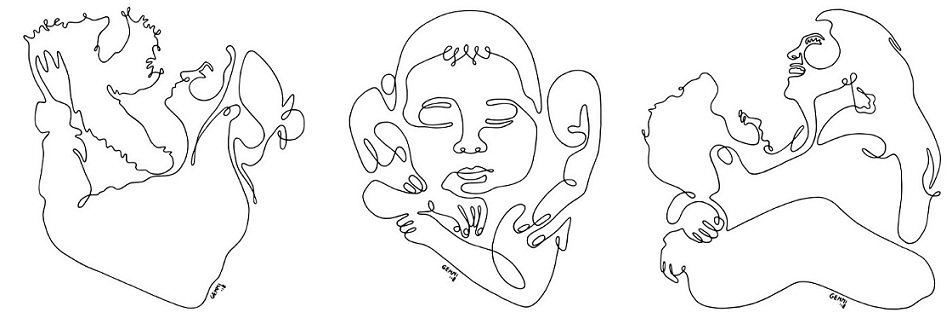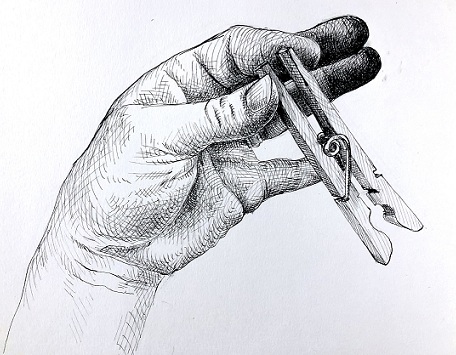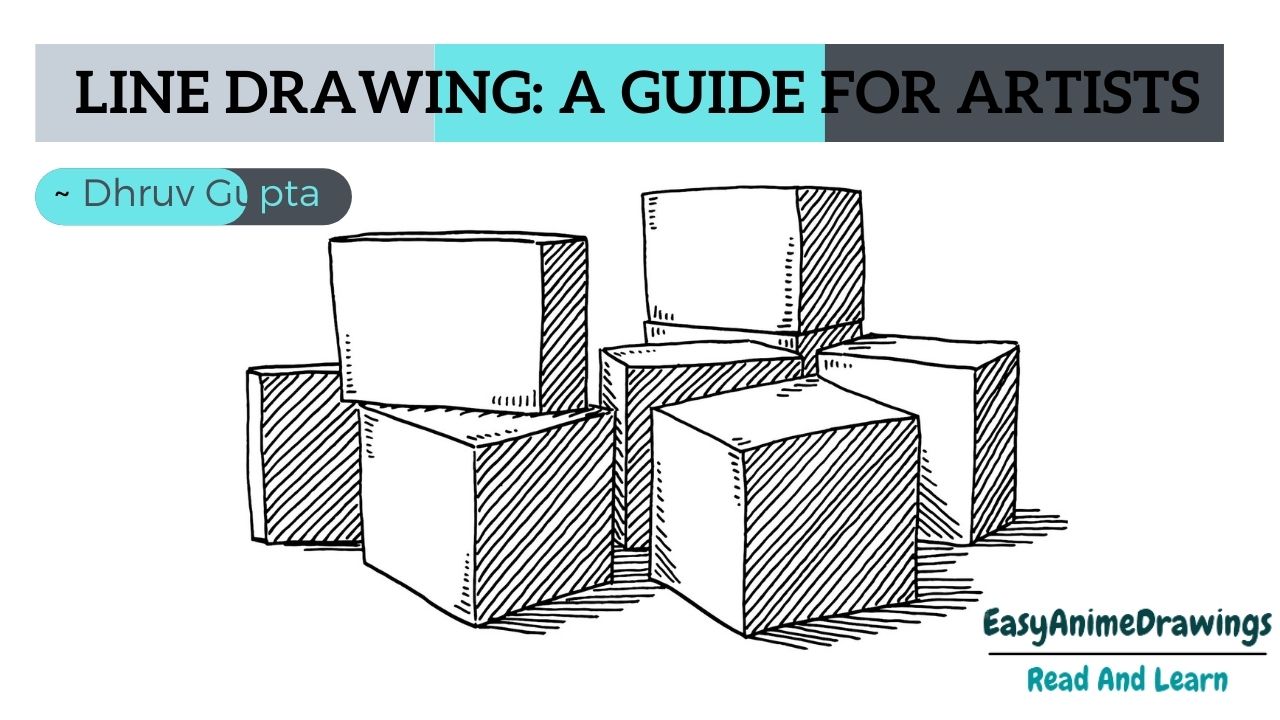Contents
Line Drawing: A Guide for Artists
If you draw often and you do not feel precious about the result, you can allow yourself to stop whenever you like painting the best, regardless of the degree of completion.
~ DHRUV GUPTA

Creating a quick touch with ink helps me focus on the process rather than the finished result. The touch technique of painting is very much related to emotions and allows me to draw naturally. Drawing in this unusual way gives me a space to research the topic out of curiosity and without expecting what the finished painting should look like.
Responding with a simple line to the momentum that first interested me in the topic is one of the most exciting things to draw for myself. Satisfying first curiosity with an open mind, relaxedly – by just drawing clearly without following specific rules already read – is often referred to as “relaxation.”
Drawing or sketching is a way of knowing your subject, researching, and just being there by looking at its features and responding to it with a mark on a piece of paper, a line. Both lines create a boundary between areas and connect them. The Contour line clarifies and informs our brain where the object ends.
By adding a line to my paper, I feel I explain both the differences between me and the subject of the painting, and I connect with it.
By drawing quickly and relying on my instincts to put the lines in a touch-up, I hope to capture the most critical information, the essence of my topic. I set aside time for short drawing sessions (from 1-minute line drawer to 10-minute lessons), minimizing the choice of what matters most – registering first, then communicating, and in what ways.
There are only so many marks and details one can put on paper in such a short time.
Choice of ink adds limits. The permanent ink element makes me consider each decision carefully, knowing that I will not be able to remove it.
Interestingly, I made fewer mistakes when painting with ink than when I used an easily adjustable tool such as a pencil or coil.
Drawing naturally allows my hand and mind to get lost in the mysterious world of shapes and angles instead of thinking cleverly about my invention. And the flexible, clear line conveys more information, like movement emotions. It can also create intense interest and bring the viewer’s attention to a particular part of the painting.
Another way to keep the line exciting and alive is to try different ways of holding the pen and starting your movements from your elbow or shoulder. That way, energy comes out of your body, and the paint marks appear liquid and alive. Changing pen pressure and positioning and marking method adds a unique flaw to the final image.
I like the small requirements for drawing an ink pen – all I need is paper and an ink pen. There is always something around it that can be drawn.
I like to use Muji-type gel pens and Micron and Rotring ink pens of various sizes. I have a small 6 x 8-inch drawing book (Muji) that I like to carry with me, but I use a large 9 x 12-inch format of Canson and Strathmore drawing pads to paint in my studio. A standard printed copy paper is a beautiful and inexpensive piece of paper that I can check out and not bother to throw away later.
Find out what works for you – what size is light enough to carry, and which drawing tool does not need to be set extra? In my experience, if it is difficult to use or needs to be repaired or cleaned afterwards, there is a good chance I will stop messing with you.
Try different things; find a pen or pencil of your choice. Change your preferences regularly, too – you might be surprised at how different your work is depending on the drawing materials you use. A challenging tool or size may eventually develop into a whole new art concept or direction.
Draw a drag! I feel that my paintings are much better when I am interested in my subject and feel happy to draw them. Naturally, my interests change based on each case. It’s usually something that draws me because it’s in front of my eyes, like animal paintings.
I drew chickens and horses on a nearby farm during a family vacation. Chickens were fun to watch, with head movements such as robots, hops and random runs, the difference between flying feathers and sharp nails and beaks.
Doves always look funny to me. I am not a big fan of birds seen nearby, with their beaded eyes and tiny, scaly feet. Don’t they look like miniature dinosaurs? But pigeons (from far away) are funny and full of personality, and I often draw them in parks.
My two cats sitting lazily on a hot and humid summer day gave an excellent painting theme – they did not change their shape immediately and were happy to keep me working on our front porch.
You can see short drawing videos of me drawing my cats (including model Mia) on my Instagram and Facebook pages.
Drawing People:

For no reason, people are the favourite and most popular topic for many artists. Naturally, we feel drawn to our human nature both as artists and spectators, including myself.
Family members, friends, random coffee shoppers – no one is safe here. And let’s not forget the gift of professional models – giving us artists endless hours of standing, holding still faces and tight muscles. The nudity, in particular, is an appropriate lesson for practising drawing and further developing the understanding of the human body.
Standing tall is one of my personal preferences, trying to capture someone else’s personality, feelings and personal issues.
And not just the face. The hands are full of emotion and reveal much knowledge about body touch and movement.
In all parts of the body, the hands are often considered very hard to draw. Indeed, their intricate design and seemingly infinite positions and touches can sometimes feel frustrating. The only way to master hand drawing is to understand it, and the only way to understand it is to learn both anatomy and hand tools and practise drawing and painting.
Many resources are available in print and online for you to read, including books written by Bridgeman and Loomis, Proko, and the Line of Action websites. Copying well-crafted hands (drawings and sketches of great artists) and drawing pictures is a well-tested and beautiful way to learn.
I prefer drawing from life, and if I do not have a model available, I use my hand (left) to quickly read or take my pictures and later use them as drawing tools.
Procedure: Hand Study on Ink

There are different methods and schools for handicrafts. Getting started is very important. My choice of how I will start a particular drawing is somewhat rash and related to what I find to be very important or different for this team.
Sometimes I will start by pointing to a “line of action” and then put down a line or lines that indicate a general action or direction. Drawing a basic shape or shape beginning with a petite frame helps plan a complex design.
Mathematically, it is helpful to mark the base of the skeletal system first – the skull, spine, shoulder, and hip axis. I can start by marking a significant dark for objects with a solid bright light.
In this particular area of the hand, I like the soft line that falls on the wrist and how the hand hangs in the air so that I will start with that outer edge from the top to the bottom of the finger.
When I make that line, I focus my eyes on the story instead of my paper. I follow the movement of my eyes and the movement of my pen. Paul Klee says, “Drawing is just a moving line.”

